Review for Life on Mars - Complete Series 1-2
Introduction
I never really enjoyed Ashes to Ashes, which is a bizarre way to start a review for the Life on Mars boxset. I couldn’t get my head around the wholesale move to London for one thing, the Keeley Hawes character never really clicked with me, and I hated that the series in the end went about resolving the mystery, a mystery that I had thought Life on Mars had pretty much resolved anyway. It was like the director’s cut of Donnie Darko, making explicit what was originally implied, a Dummies Guide to Life on Mars. But the real reason that I didn’t like Ashes to Ashes was the eighties setting. I remember the eighties, I grew up during the eighties, Tories in power, Strikes, The Troubles, I remember it all, and while I may wax nostalgic on occasions for eighties movies and music, I certainly don’t have that affection for those ten years of history.
But I was just a kid during the seventies. I was still in infant school when that decade ended, and I only remember the good things about the years of the seventies that I lived through, the Muppet Show on TV, hot summers, being carried on my dad’s shoulders, trips to the beach, innocent entertainment from people on telly who thirty years later would wind up accused, and in some cases convicted of sexual offences. Nostalgia is a powerful sensation, and Life on Mars pushed all of my nostalgia buttons in the right way when I originally watched it seven years ago. But at the time, I did file it away under ‘event TV’, the kind of show that you only need to watch once, as the second time it will lose its impact. Last year however, I got the urge to watch it again, and to my surprise it wasn’t on any of the TV channels. You’d expect a show that good to get regular repeats. A DVD boxset quickly resolved that.
And yes, a DVD boxset after I had bought a Blu-ray player, and for a show that is available on Blu-ray. Three reasons... First, Life on Mars was shot on 16mm film, but was finished in post production for SD broadcast. The Blu-rays are up-scaled from an SD source. The second thing is NTSC slowdown. UK TV is a 50Hz format, PAL for SD and 1080i 50Hz for HD, which is in effect a 25fps format. That’s native on UK DVD, but the creators wanted to sell their Blu-rays across the world. They’ve actually mastered those discs at 24fps 1080p, which is 4% slower than the native frame rate, each episode runs some three minutes longer. No doubt the audio is deeper or pitch corrected. The third thing isn’t format specific, but on home video release, some of the songs in the show were replaced. I hate it when that happens, and even though I’m not a fan of Deep Purple, I’m still against it on principle. From what I can see with the aid of Google, eight songs (including four by Deep Purple and one by The Rolling Stones) were replaced for Season 1 and two songs for Season 2. Thankfully they found period songs from other artists and didn’t just use muzak, but still, that isn’t going to convince me to shell out more money than I have to.
Not all that long ago, practically every genre show used to get a voiceover ahead of the opening credits that would spell out the premise of the show in a few lines atop of a brief montage. That doesn’t happen so much now, with adverts ruling the airwaves, and shows edited down to just forty minutes per hour of television. You’re lucky if you get a theme song. But Life on Mars has a theme tune, and just like those seventies and eighties shows it’s gets a voiceover prologue as well. “My name is Sam Tyler. I had an accident, and I woke up in 1973. Am I mad, in a coma, or back in time? Whatever's happened, it's like I've landed on a different planet. Now, maybe if I can work out the reason, I can get home.” That’s simple, to the point, and effective, and pretty much all that you need to know about the show. That and that it’s a police procedural as well. Sam Tyler was a put upon police detective in 21st Century Manchester, beholden to the rules, and with that cold clinical approach to policing even extending to his personal life, driving a wedge between him and his girlfriend Maya. And then he got hit by a car...
He wakes up in 1973, as a Detective Inspector newly assigned to Manchester CID from Hyde, and finding that he now has to work with a wholly unreconstructed masculine Detective Chief Inspector in the form of Gene Hunt, in a department rife with misogyny, petty corruption, a disregard for paperwork and red tape, and reeking of cigarette smoke and cheap aftershave. But there is that tantalising impression that a swift kick to the ‘nads accomplishes a whole lot of police work more economically and with less headache than all that politically correct and forensic 2005 policing. Maybe Sam can bring enough of his brand of policing in to strike a tolerable compromise. But when his 21st Century life keeps trying to break into 1973 in ever more unsettling ways, the question arises of whether he’s actually in the past in the first place...
Eight episodes of Life on Mars Series 1 are collected on four discs in an Amaray style case, and a further eight episodes of Life on Mars Series 2 come on 4 discs in another Amaray, with both cases presented in a thin card slipcover.
Picture
The image comes across in 1.78:1 anamorphic form. It’s clear and sharp on these DVDs, and with just two episodes per disc, there’s not much in the way of compression artefacts and very little aliasing to worry about. Each episode gets a filmic look to it that really impresses. The seventies come to life in golden nostalgic tones, the production values are always on screen, and in terms of direction, production design, and costumes, this is a show to savour. And you will probably be tempted to play spot the anachronism with the DVDs, just as a nation did when the show was aired originally. They didn’t have combi boiler flues back in the seventies.
Sound
You have the choice between DD 5.1 and DD 2.0 Surround English, with optional subtitles for the episodes only. The audio is clear throughout, and the surround track gives the show some nice presence for the action sequences, and the car chases through cardboard boxes. The music soundtrack, even with the song alterations definitely helps make the show, and generally the audio experience for Life on Mars is quite rosy. That’s all except the layer changes, which on discs which could easily have been authored to hold one episode per layer, still somehow contrive to get layer changes in the middle of episodes, and on occasion can be jarringly obvious.
Extras
You get the two Life on Mars Series collections in two Amaray sized cases with four discs apiece, both in a single card slipcase. The Amaray cases hold two discs overlapping on the front panel, and two overlapping on the rear.
Each disc presents its content with animated menus. The extras are distributed as follows.
Series 1
Each episode in Series 1 gets an audio commentary.
Episode 1: Director Bharat Nalluri, Co-creator and Writer Matthew Graham, and Producer Claire Parker
Episode 2: Director Bharat Nalluri and Producer Claire Parker
Episode 3: Director John McKay and Phil Glenister (Gene Hunt)
Episode 4: Director John McKay and Phil Glenister (Gene Hunt), Producer Claire Parker, Writer and co-creator Ashley Pharoah, and John Simm (Sam Tyler)
Episode 5: Producer Claire Parker, Director S. J. Clarkson, and Writer and co-creator Tony Jordan
Episode 6: Writers and Co-Creators Matthew Graham and Ashley Pharoah, and Director John Alexander
Episode 7: Writer Chris Chibnall, Director S. J. Clarkson, Producer Claire Parker, Marshall Lancaster (Chris Skelton), and Dean Andrews (Ray Carling).
Episode 8: Director John Alexander, Producer Claire Parker, and John Simm (Sam Tyler).
The commentaries vary from the verbose and informative to the gappy and trivial, but they are well worth listening to.
There are extras spread across the discs as well.
Disc 1
Take a Look at the Lawmen Part 1 (33 minutes)
This features interviews with the cast and crew, and the odd look behind the scenes, as they follow the show from concept to screen, the influences on the show, and the character conflict that drives it.
Disc 2
Take a Look at the Lawmen Part 2 (31 minutes)
The featurette concludes with a look at the supporting cast, the final episode of the series, and the direction that it might take in the then yet to be written Series 2.
Disc 3
The Music of Life On Mars (14 minutes)
Edmund Butt is interviewed primarily about the music that he composed, although he touches tangentially on the eclectic period soundtrack of 70s tunes chosen for the show. You can also hear the building blocks of the theme tune as it is constructed.
Disc 4
Easter Egg. Seek and you shall find a 3 minute featurette on how CGI was used in the show.
“Get Sykes” – Featurette with Production Designer Brian Sykes lasts 8 minutes and we get an interview about the recreation of the seventies, and the different design ethic between then and the modern day.
Out-takes, 6 minutes of goofing up, corpsing and flubs, and the bizarre nature of what gets bleeped in an outtakes reel and what does not...
Series 2
No commentaries this time around, I’m afraid.
Disc 1
The Return of Life on Mars is a 45 minute featurette which offers some rounded interviews with the cast and the crew about the second season. It’s a nice detailed piece, with some interesting information to be gleaned, not least of which is the tightrope that had to be walked when it came to the seventies’ political incorrectness, which had a greater prominence in the show this time around.
Disc 2
Behind the Scenes of Episode 3 lasts 22 minutes and takes a look at the explosive pre-credits opening to the show, from concept to filming and postproduction, with interviews conducted on location with the cast and crew.
Disc 3
Behind the Scenes of Episode 5 lasts 15 minutes and takes a look at the pre-credits Camberwick Green style animation, and how it was accomplished.
Behind the Scenes of the CID set is just a short 3½ minute walkthrough narrated by episode director SJ Clarkson and producer Claire Parker.
Disc 4
The End of Life on Mars lasts 28 minutes, and following an understandable spoiler warning, has the cast and crew talk about the end of the series, their reactions to it, and how it came about.
Behind the Scenes of Episode 7 lasts 3½ minutes and offers a director (SJ Jackson) voiceover for the behind the scenes look at the courtroom scene.
Behind the Scenes of Tufty’s Cameo lasts 4 minutes, and offers some profane comments from Philip Glenister on his time in the squirrel costume.
Conclusion
Life on Mars was special when it was first broadcast, and contrary to my expectations, it’s lost none of its charm even now, given a second watch, and knowing full well its secrets ahead of time. I think Life on Mars was the last watercooler show that was made in the UK, the last TV show that felt as if the whole country was talking about it the day after each new episode aired. The mystery of Sam’s presence in 1973 was one thing, but the nostalgia aspect to it was another, and so were the characters. There was something for everyone to appreciate with Life on Mars, but I was surprised to find that the show feels even stronger now.
It’s one of those inspired moments in television, a collision of two genres, a police procedural and a supernatural/sci-fi mystery. Everyone loves a good cop show, and the genre really did come into its own back in the seventies, with shows like The Sweeney in the UK, Starsky and Hutch, and The Streets of San Francisco in the US. That was back when cops pounded the beat, and pounded the suspects to get to the bottom of crimes, visually and emotionally more engaging than the dry forensic analysis of 21st Century police shows. Throwing Sam back in time offered the perfect excuse to make a seventies cop show in the 21st Century.
But then there is the fact that Sam has an accident and wakes up in 1973, a 21st Century, dry, cold and clinical forensic police detective thrown into the Technicolor world of ‘seat of the pants’ policing, and the culture clash is palpable. The mystery of why he is there is one thing, but how he deals with it is another thing altogether, and there’s a lot of fun seeing him try to bring his style of policing to Gene Hunt’s department.
Of course the joy of Life on Mars is in the characters, of which the inimitable Gene Hunt is the main draw. There hasn’t been as enjoyable an anti-hero on television before. He’s a hard hitting, hard drinking cop of the old school, focuses on keeping his city clean, but not above bending a few rules, and partaking of a few perks in the process. When Sam Tyler shows up, cleaner than clean, and strictly by the book, confrontation is inevitable, and so is born one of the best cop duos on the screen. The two on screen together are dynamite, and there ensues an elaborate dance, as they find things in common, find lines that they refuse to cross, begin to pick up on each other’s principles and approach to policing, and develop a grudging respect. They could be the best of friends, then someone does something beyond the pale in the other’s eyes, and they’re at each other’s throats again.
Of course there’s the supporting cast as well, the gormless but well meaning Chris, the wholly unreconstructed Ray, and Sam’s rock in 1973, Annie, a woman police officer in a man’s world. There’s the semi-mystical barman Nelson, and the dryly sarcastic desk sergeant Phyllis, it’s a rich tapestry of characters to work with, and it’s no surprise that Ashes to Ashes came about. You don’t want to lose someone like Gene Hunt after just two series.
With that set up behind it, the great characters, and the nostalgic 1970s setting, you get some great stories too, with episodes looking at some aspect of 1970s Britain through a contemporary lens. It may be police corruption, racism, sexism, union power, football hooliganism, drugs, police brutality, and terrorism. But the way that the episodes are written, the parallels to the modern world are always clear. The details in society may have been different back in the 1970s, but those negative aspects of society have not disappeared, they’ve just evolved into new forms. The blatant behaviour in the seventies might be shocking, but masked behind political correctness people can still be just as offensive. Life on Mars also eases you into the seventies, with the first season almost treating its subject matter with a satirical air, there’s a knowing irony to its portrayal of racism and the like. The same isn’t true for the second season, where the irony fades in favour of a more realistic interpretation of the political incorrectness of the era. It also shifts the balance in the second season away from the comedy and more towards the drama, which helps to raise the stakes for the characters as the second season unfolds.
The funny thing is, that despite the lightly filtered, ‘Neanderthal’ seventies brought back to life in the show, there’s really only one thing that is truly shocking about Life On Mars, the Jimmy Saville cameo at the start of the final episode. Maybe that’s why the show hasn’t seen too many repeats. But then again, who knew back in 2007? If you can change some of the songs due to copyright, couldn’t you overdub that scene with Tony Blackburn? On the other hand it adds another layer of creepiness in addition to the regular freak-outs caused by Test Card girl.
I’m being facetious of course. This is one of my favourite shows, and it has stood up to the test of time remarkably well. The characters are fantastic, the dialogue is eminently quotable (although probably not in polite company), the storytelling is impeccable, and the show is even more enjoyable and compelling the second time around. Terms like ‘instant classic’ are easily bandied, but Life on Mars is in my opinion the best television show of the noughties.







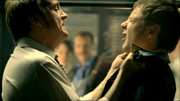












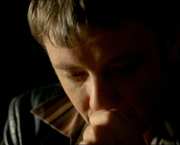



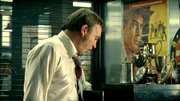
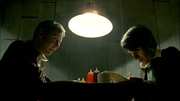




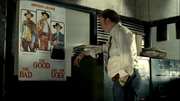








































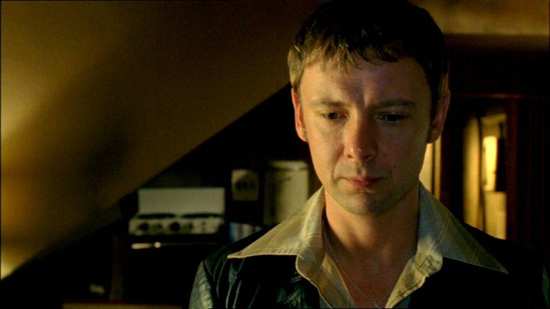










Your Opinions and Comments
Be the first to post a comment!